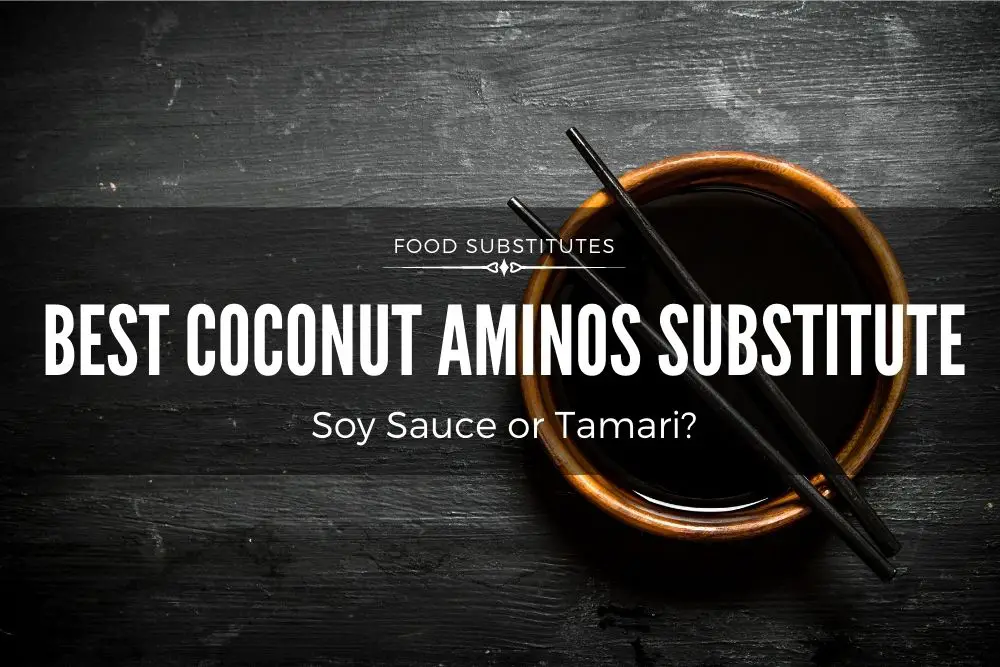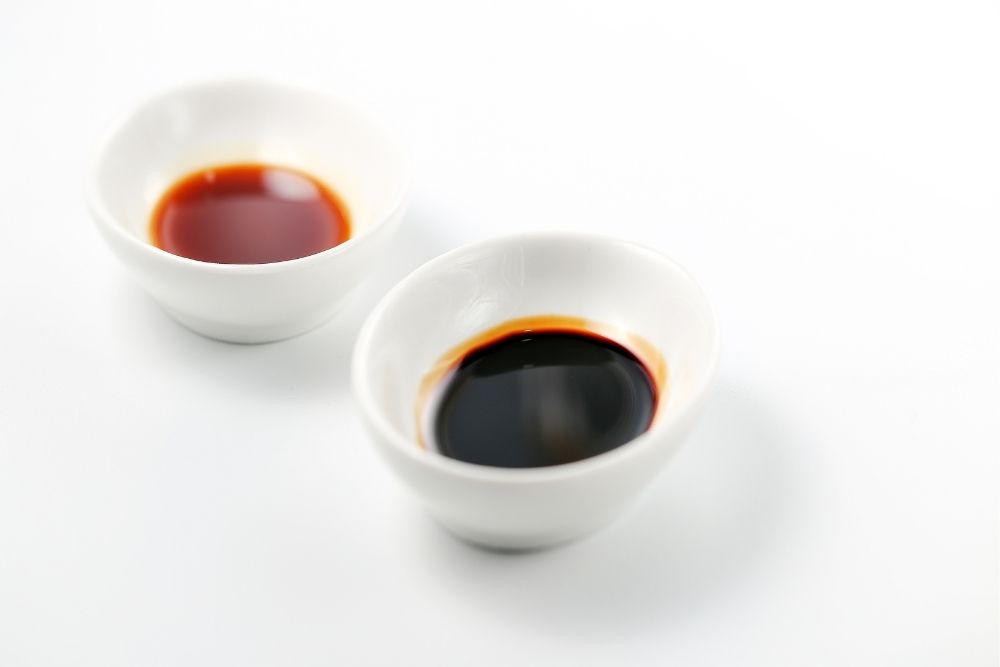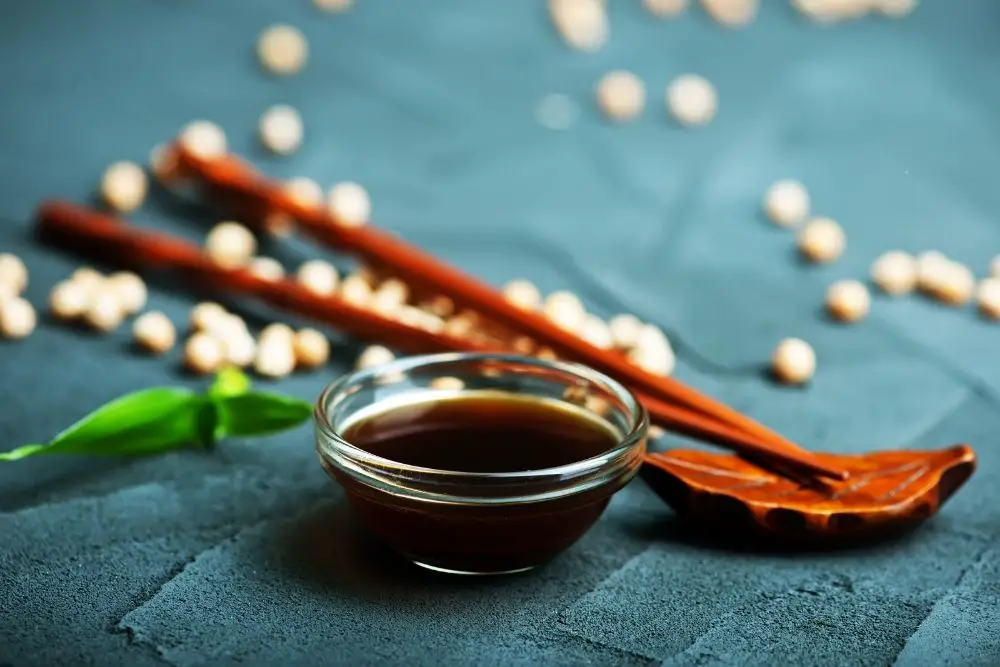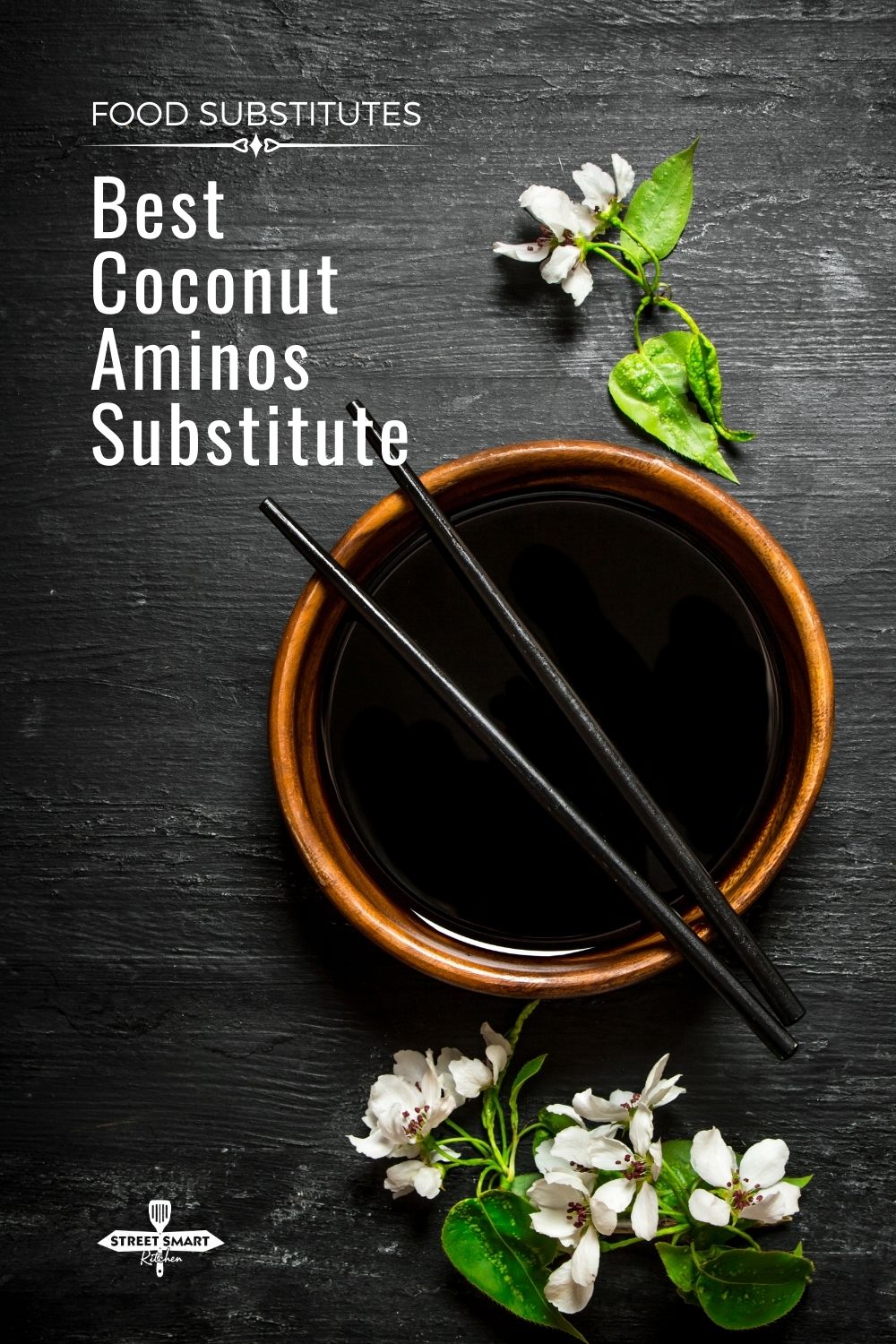What’s the Best Coconut Aminos Substitute: Soy Sauce or Tamari?
What is the best coconut aminos substitute? Here are five different options (and their benefits) when you don’t have this savory, umami Asian condiment on hand.

Have you come across a recipe that calls for coconut aminos, and you’ve got zilch? Let’s take a look at what you can use in place of this savory, soy-free seasoning sauce. Made from coconut tree sap and sea salt, coconut aminos are also slightly sweet, similar to soy sauce or tamari, but with a lighter umami flavor.
What Is Coconut Aminos?
Coconut aminos are a popular soy sauce alternative. They’re wheat, gluten, soy-free, Whole30-approved, paleo, keto, and vegan-friendly. They contain no MSG and are low-glycemic. For all these reasons, coconut aminos are an excellent seasoning for those who have soy, wheat, or gluten allergies, food sensitivities, or follow an alternative diet.
Coconut aminos is considered a healthier alternative to traditional soy sauce because it’s lower in sodium, containing only 90 milligrams per teaspoon. In comparison, regular soy sauce has 280 milligrams of sodium per teaspoon.
For these reasons, coconut aminos have become popular for “healthifying” all kinds of savory Asian food recipes. You can use coconut aminos as a stir-fry sauce and marinade in salad dressings, and they can make the flavors pop in veggies or fish, coconut milk curries, and cauliflower rice. They’re even delicious as a dipping sauce for takeout sushi.

While coconut aminos are a great condiment to keep on hand, they’re not always easy to find at the grocery store. You may have to wait a few days and order them on Amazon. If you’re in a pickle, let’s see what else you can use as a coconut aminos substitute while keeping the integrity of flavors in your dish.
There are a few brands on the market. My go-to brand is Coconut Secret.
What’s the Difference Between Coconut Aminos, Soy Sauce, and Tamari?
Soy sauce, tamari, and coconut aminos are often grouped together, but there are some key differences between them. Here’s what to know when you substitute.
Soy Sauce: Known for its signature bold, salty, umami flavor and as a mainstay of Asian cuisine, soy sauce is made by fermenting soybeans and wheat with a yeast culture or mold and salty brine. This is why soy sauce is naturally high in sodium. It contains gluten, wheat, and soy (which are common allergens).
Tamari: A gluten-free version of soy sauce that originated in Japan, tamari goes through the same fermentation process as soybeans but without the addition of grains, which makes most varieties of tamari gluten-free. (Although I’ve never seen any. Apparently, some tamari brands still contain gluten, so be sure to check the label to ensure it’s gluten-free.)

Without adding wheat, tamari has a slightly different taste than soy sauce. It’s quite bold and salty but also slightly sweet. Tamari has close to the same amount of sodium as regular soy sauce.
Coconut Aminos: This sauce is made from fermented coconut sap and sea salt, which makes it gluten-, soy-, and wheat-free. It’s slightly sweet, salty, and less bold than tamari and soy sauce but with a light umami flavor.
5 Best Coconut Aminos Substitute Options
1. Low-Sodium Tamari
What to know: Tamari is wheat- and gluten-free and has approximately 25% less sodium than soy sauce. It still has a bold, salty flavor and a very subtle sweetness, which is closer to that of the coconut aminos flavor profile.
How to substitute: You can substitute in a ratio of 1:1. If you don’t want your recipe to be as salty, start with ½ teaspoon of low-sodium tamari for every teaspoon of coconut aminos and adjust to taste.
2. Low-Sodium Soy Sauce
What to know: You can still get some of the low-sodium “perk” and umami taste of coconut aminos by substituting low-sodium soy sauce. Low-sodium soy sauce yields 176 milligrams of sodium per teaspoon compared to 280 milligrams per teaspoon in regular soy sauce. If you’re following an alternative diet, remember that soy sauce contains wheat, gluten, and soy.
How to substitute: You can substitute in a ratio of 1:1, or if you don’t want your recipe to be as salty, start with ½ teaspoon of low-sodium soy sauce for every teaspoon of coconut aminos and adjust to taste.

3. Liquid Aminos
What to know: Bragg Liquid Aminos is made from non-GMO soybeans and purified water, which makes it naturally gluten- and wheat-free. It doesn’t undergo a fermentation process while breaking the soybeans down into amino acids, so no brine or table salt is added. Despite this, Liquid Aminos is still quite high in sodium and contains 350 milligrams per teaspoon (which is even higher than regular soy sauce).
If you choose this option, be mindful of the sodium content and how that may alter your recipe. Since Liquid Aminos is not fermented, it doesn’t taste quite as bold or salty (despite the sodium content) and is slightly sweet.
How to substitute: You can substitute in a ratio of 1:1, or if you don’t want your recipe to be as salty, start with ¼ of a teaspoon of Liquid Aminos for every teaspoon of coconut aminos and adjust to taste.
4. Gluten-Free Homemade Coconut Aminos and Soy Sauce Substitute
(Using Fish Sauce, Balsamic Vinegar, and Beef Broth)
Are you up for creating your own version of coconut aminos or a soy sauce substitute at home? There are some very creative and resourceful minds on the interwebs, especially regarding food substitutes—and this recipe is relatively simple and easy.
This coconut aminos substitute recipe uses basic ingredients like beef broth, balsamic vinegar, molasses, garlic powder, and fish sauce. Give it a try if you’re inclined. It would be perfect to keep on hand for your next big stir-fry.

5. Homemade Soy Sauce Recipe
Following the above thought, here is a homemade soy sauce recipe you could also try when you need a coconut aminos substitute. PSA: You will need a mold or yeast starter and some patience (about 365 days worth!), but it’s a cool experience to make and bottle your very own soy sauce.
The Takeaway
When you need a coconut aminos substitute, low-sodium tamari or Liquid Aminos will help you get as close as possible to the flavor of coconut aminos—with the low-sodium and gluten-free health benefits.
Low-sodium soy sauce will also work just fine, but it has a bolder flavor and more sodium (and it’s not gluten-free). You can also get crafty and make your own coconut aminos substitute using a few basic ingredients you may already have in your pantry.

About the Author
Sharon Chen is an Integrative Nutrition Health Coach and author of the Complete Sous Vide Cookbook. She believes food not only brings healing but also connection. As the creator of StreetSmart Kitchen, she aims to make meal prep easier than ever and help you find balance, ease, joy, and simplicity in the kitchen as you improve your well-being.



Great post! I never realized how versatile coconut aminos could be and it’s helpful to see comparisons with soy sauce and tamari. I’m gluten-free, so I really appreciate the breakdown on tamari as an alternative. I’ll definitely be trying out some of these suggestions in my cooking!
One of the best blog posts ever. Bookmarked for the future!
Substitute For Coconut Aminos